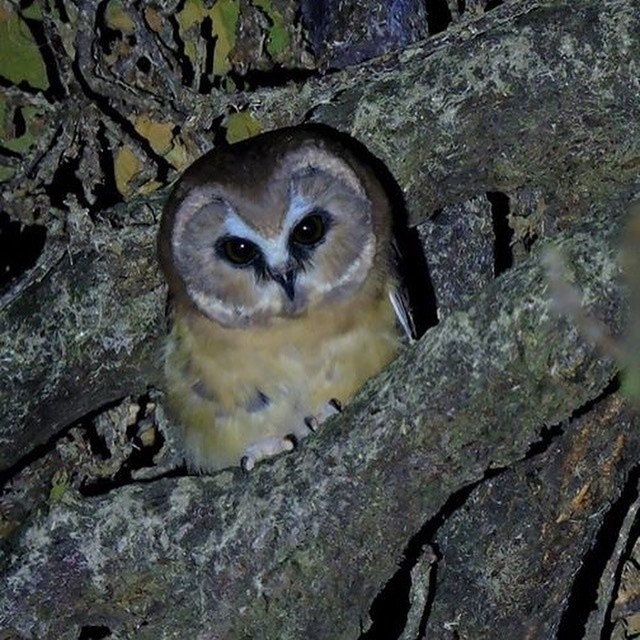Unspotted Saw-whet Owl
A species of Saw-whet Owls Scientific name : Aegolius ridgwayi Genus : Saw-whet Owls
Unspotted Saw-whet Owl, A species of Saw-whet Owls
Botanical name: Aegolius ridgwayi
Genus: Saw-whet Owls
Content
Description General Info
 Photo By diegoq , used under CC-BY-NC-4.0 /Cropped and compressed from original
Photo By diegoq , used under CC-BY-NC-4.0 /Cropped and compressed from original Description
The unspotted saw-whet owl (Aegolius ridgwayi) is a small owl. It is a resident breeder in the highlands of Central America from southern Mexico south to western Panama, mainly at altitudes above 2500 m. It has occasionally been considered conspecific with the northern saw-whet owl. There are currently no recognized subspecies. This nocturnal bird breeds in open mountain forests, in both the cloud forest and the higher oak woodland, laying its eggs in a tree hole. It hunts rodents, shrews and other small mammals as its main prey, but will also feed on birds, bats and insects. The unspotted saw-whet owl is a small, dumpy, short-tailed and broad-winged owl, approximately 18 cm long and weighing approximately 80 g. It is dark brown above with white markings on the wings. The underparts are unstreaked buff, becoming darker on the upper chest and facial disc. The head is large, with yellow eyes and a white-edged facial disc. The flight is fluttery and agile. The voice of the unspotted saw-whet owl is a series of rhythmic toots. Reports of this owl at lower altitudes are invariably due to the extremely similar call of an Anotheca tree frog. The scientific species name is for the American ornithologist Robert Ridgway. 
Size
13 - 23 cm
Nest Placement
Cavity
Feeding Habits
Unspotted Saw-whet Owl primarily preys on small vertebrates, including rodents, shrews, and even bats. It employs nocturnal hunting methods to ambush or pursue prey, demonstrating a preference for feeding at night. Unique adaptations include silent flight and acute hearing to locate hidden food sources.
Habitat
Unspotted Saw-whet Owl resides in temperate, humid montane forests with high canopy cover and a mix of tree species providing essential refuge and roosting spaces. They favor dense forest canopies and edges, thriving in oak and cloud forests interspersed with Quercus, Oreopanax, Rapanea, and Pinus, indicative of their ecological necessities.
Dite type
Carnivorous
General Info
Feeding Habits
Bird food type
Scientific Classification
Phylum
Chordates Class
Birds Order
Owls Family
True owls Genus
Saw-whet Owls Species
Unspotted Saw-whet Owl